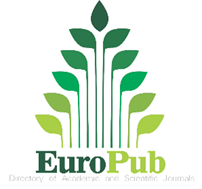HYPATIA MODEL
integration with DSpace software
Keywords:
Hypatia Model, OAI-ORE, DSpace, Interoperability, Digital preservationAbstract
Study that aims to present the discussion on the integration of the Hipátia Model with the DSpace software. It is based on a methodology that has practical characteristics, with aspects that resemble those treated in computer science and on studies focused on the metadata standards used in DSpace, as well as adjustments to the computerized layer of the Hipátia Model, carried out in strict accordance with the archival principles of digital preservation, ensuring the integrity of the chain of custody. It results in demonstrating the flow of necessary configurations and adaptations in the Hipátia Model to enable the use of DSpace's native Open Archives Initiative - Object Reuse and Exchange protocol, with the aim of collecting, packaging, preserving and disseminating digital objects. It concludes that the main contribution of this work is the simplification of the process of integrating tools into the Hipátia Model, through the use of a protocol already incorporated into DSpace. This approach facilitates the adoption of the Hipatia Model by institutions that already use DSpace as a digital repository, as it does not require the implementation of additional protocols or extensive modifications to the system.
Downloads
References
BERNERS-LEE, Tim et al. Creating a Science of the Web. Science, v. 313, n. 5788, p. 769-771, 2006.Disponível em: DOI: 10.1126/science.1126902. Acesso em 11 jun. 2024.
BRAGA, T. E. N. O modelo Hipátia: a proposta do Ibict para a preservação digital arquivística. In: BRAGA, T. E. N.; MÁRDERO ARELLANO, M. Á. (org.). Hipátia: modelo de preservação para repositórios arquivísticos digitais confiáveis. Brasília: Ibict, 2022. p. 52-65. (Informação, Tecnologia e Inovação, v. 1). DOI 10.22477/9786589167501.cap4. Disponível em: http://labcotec.ibict.br/omp/index.php/edcotec/catalog/view/livrohipatia/136/943. Acesso em: 17 jun. 2024.
BRAGA, T. E. N.; MÁRDERO ARELLANO, M. Á. Hipátia: modelo de preservação para repositórios arquivísticos digitais confiáveis. Brasília, DF: Ibict, 2022. Disponível em:http://labcotec.ibict.br/omp/index.php/edcotec/catalog/view/livrohipatia/136/943. Acesso em: 18 jun. 2024.
DE SOUZA, A. H. L. R. et al. O modelo de referência OAIS e a preservação digital distribuída. Ciência da Informação, v. 41, n. 1, 2012. Disponível em: https://revista.ibict.br/ciinf/article/view/1352. Acesso em: 15 jun. 2024.
LAGOZE, C. et al. Open Archives Initiative Object Reuse and Exchange (OAI-ORE). Open Archives Initiative, 2008.
SHINTAKU, M. et al. Uso do protocolo de interoperabilidade OAI-ORE para preservação digital. Revista Brasileira de Preservação Digital, Campinas, SP, v. 4, n. 00, p. e023012, 2023. DOI: 10.20396/rebpred.v4i00.17992. Disponível em: https://econtents.bc.unicamp.br/inpec/index.php/rebpred/article/view/17992. Acesso em: 17 jun. 2024.
SILVEIRA, Lucas Ângelo et al. Guia para a Integração do DSpace com o TemaTres. Brasília, DF: Ibict, 2020. Disponível em: https://ridi.ibict.br/bitstream/123456789/1118/1/SILVEIRA_GOMES_MENESES_SHINTAKU_%20Integra%c3%a7%c3%a3oDspaceETematres_2020.pdf. Acesso em 10 jun. 2024.
VAN DE SOMPEL, H.; LAGOZE, C. Notes from the interoperability front: a progress report on the Open Archives Initiative. In: International Conference on Theory and Practice of Digital Libraries. Berlin, Heidelberg: Springer Berlin Heidelberg, 2002. p. 144-157.
WAZLAWICK, Raul Sidnei. Metodologia de pesquisa para ciência da computação. Rio de Janeiro: Elsevier, 2009.
Downloads
Published
How to Cite
Issue
Section
License
Os Autores mantêm os direitos autorais e concedem à Archeion Online, o direito de publicação simultaneamente disponibilizada de acordo com uma Licença Creative Commons, permitindo o compartilhamento sem fins lucrativos de sua obra pelo seu uso/citação de modo referenciado (com reconhecimento da autoria e publicação nesta revista).

















